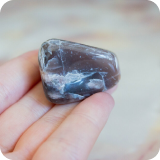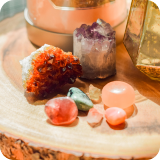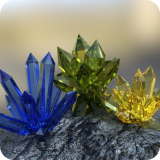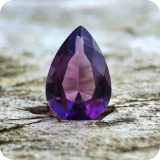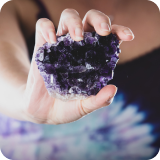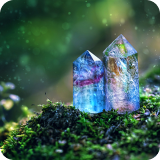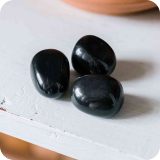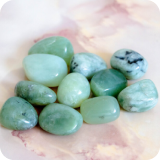- How To Easily Tell if a Crystal Is Fake: 15 Signs and Tests
- 9 Crystals That Are Commonly Faked
- Emerald
- Moldavite
- Opal
- Ruby
- Sapphire
- Jade
- Rose Quartz
- Tanzanite
- Turquoise
- Final Verdict: Real Crystals Vs. Fake Crystals
Fake crystals are as old as real crystals because humans have been trying to enhance them with dyes, filling, molds, and whatnot. Makes you wonder what fake stones are made of. How to tell if a crystal is real? How to know if crystals are real? How to spot fake crystals?
Duplicate or fake stones may be made of cheaper crystals like Quartz or other materials like glass, resin, acrylic, cubic zirconia, fillers, and simulants. You can determine if your crystal is real if it passes the tests based on color zoning, clarity, hardness, and fluorescence, to name a few.
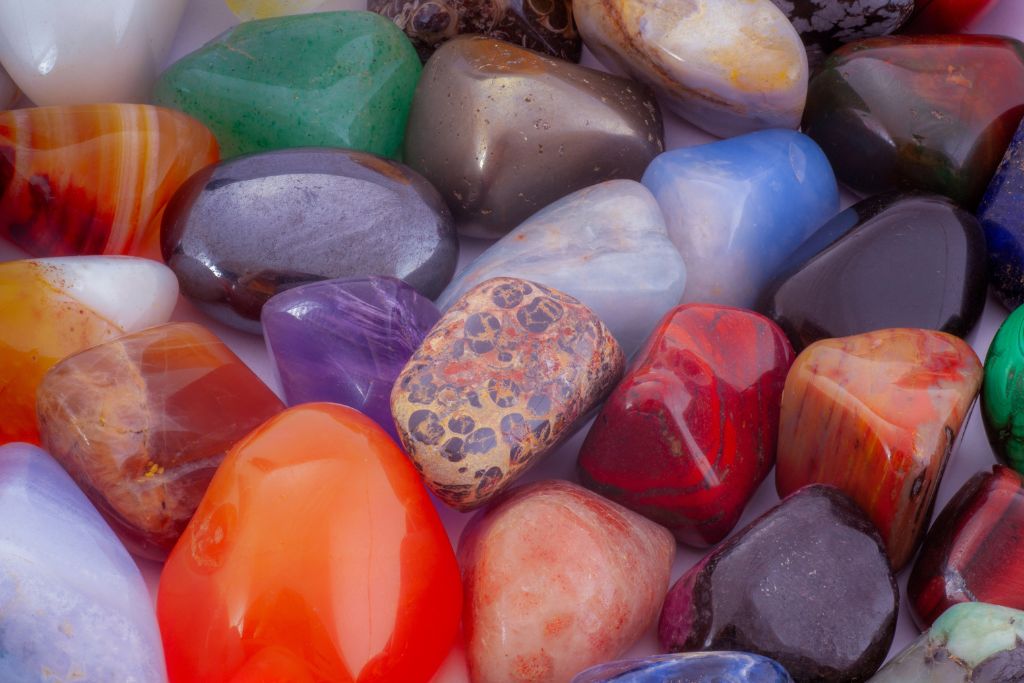
I’ll teach you how to test your crystal in these and more ways to confirm its authenticity (or duplicity!). I’ve added a checklist at the end of this article to help you determine if your crystals are genuine.
How To Easily Tell if a Crystal Is Fake: 15 Signs and Tests
Disclaimer: Before testing any crystal in the following ways, check its potential for physical damage. The following tests aren’t definite proofs of the authenticity of a gemstone or crystal and must be used in conjunction with the other tests. Consult a gemologist for clarity and accuracy.
Sellers often create synthetic crystals, like CZ and simulants, or pass off the glass as real crystals. For example, Quartz is often irradiated, dyed, or filled in to mimic many expensive crystals.
Here are the 15 ways to determine real crystals from fake crystals:
Color Zoning
Color zoning refers to an uneven distribution of color in a crystal or gemstone. Real crystals have a shade of the same color and even other colors from different minerals.
For instance, color zoning in genuine Amethyst is vivid. You’ll notice some areas are lilac and others purple, lavender, or even white, yellow, or clear in a genuine stone. But Clear Quartz and Optical Calcite have nearly zero zoning or color variations.
Because it’s easy to dye natural crystals, like Quartz, or glass for streaks that resemble expensive real crystals, you’ll find many crystals in the market with fake color banding.
Some popularly faked ones are Citrine, Tourmalines, Sapphires, and Rubies.
Pro Tip: Get (if you haven’t already!) a magnifying loupe online or offline and observe color zoning (or the lack of it) in your stone.
Clarity or Transparency
Real crystals may be transparent or translucent to let light pass through. You may even see inclusions, color zoning, and other crystals in some with the naked eye.
Fake crystals mimic the inclusions by dyeing; hence, phony inclusions in fake gemstones are convincing only until closer inspection.
For example, Diamonds, Rubies, and Sapphire crystals are usually faked for clarity with Moissanites, Synthetic Corundum, and CZ stones.
Pro Tip: Do a light test to check if your crystal is cloudy, hazy, or opaque. Keep or hold crystals before your phone’s flashlight (touching or as close) to check its transparency from the other side.
Patterns
Real Blue Lace Agate, Crazy Lace Agate, Ametrine, and Calligraphy Jasper crystals have captivating abstract patterns.
Fake Crystals show consistent and uniform patterning with different colors made to look real, so look for inconsistencies using a loupe.
Pro Tip: Rub a little water on your crystal (only if it’s a water-safe crystal) to check if the colors come off with a wet tissue or wipe.
Interaction With Light
Real crystals interact with light by reflecting, diffracting, dispersing, or scattering it based on their refractive index.
Some crystals show none, but others may show Asterism (Star), Chatoyancy (Cat Eye), Pleochroism (Color Change), Adularescence (White/Blue Sheen), Aventurescence (Shimmer), or Schiller Effect (Sparkle).
Fake crystals won’t show any of these optical phenomena and look flat or dull when moved before light.
You can identify real Aquamarine, Peridot, and Topaz from fakes by checking for their refractive qualities with light.
Pro Tip: Hold your crystal under a light bulb and check its refraction, reflection, etc. Multiple interactions within a stone may indicate it’s real.
Temperature and Thermal Conductivity
Real crystals are cold to the touch, and fakes feel lukewarm. Real stones are also good conductors of heat, so they warm up easily.
Pro Tip: Place a piece of ice on the crystal and check how long it takes the crystal to warm back up. Genuine crystals warm up instantly. Don’t try this with crystals that have low MOHS hardness.
Flame Test
In this test, you hold a crystal before a candle flame with a heat-resistant tong. You can gradually move the crystal into the flame to check if the dye melts out.
Avoid using crystals like Amethyst, Fluorite, and Celestite in the flame test because they may crack or break from the heat.
Pro Tip: Hold your crystal over a candle flame and see if it’s melting or warping. Real crystals remain unchanged, while fakes melt easily.
Inclusions
When observed with a magnifying loupe, fake crystals often show air bubbles from plastic, resin, or glass trapped inside the stone. Real crystals have intricate inclusions that are often unique in nature.
Keep in mind that crystals have all sorts of inclusions, like the 21 listed below. Check for the results of other tests before confirming their authenticity.
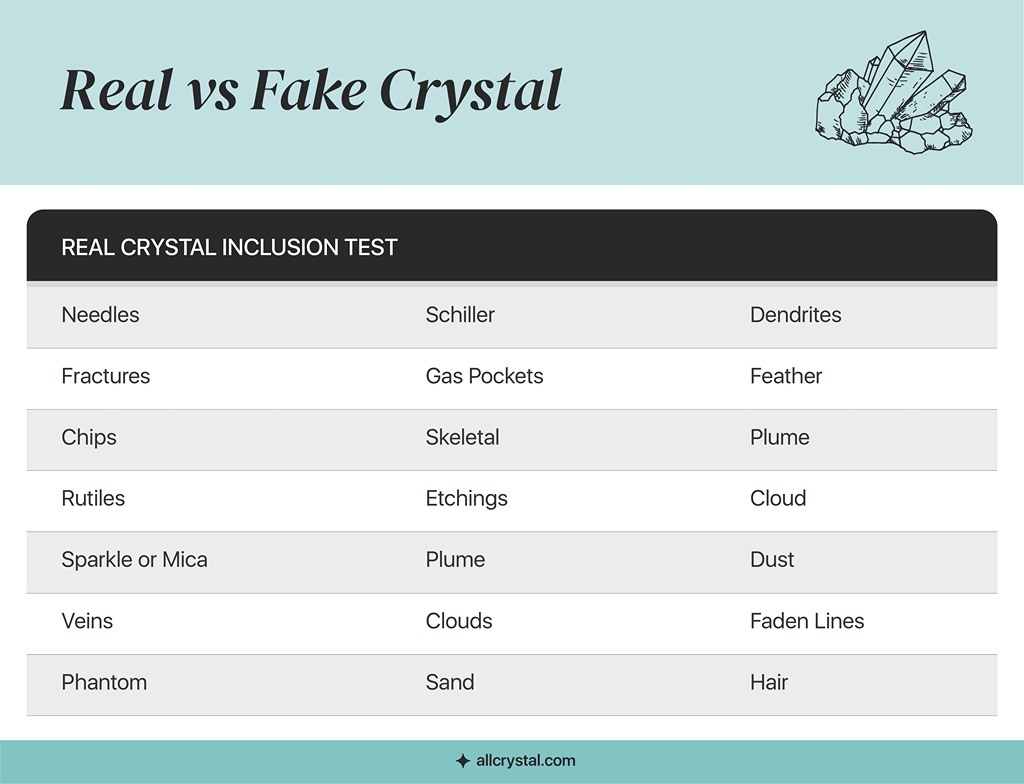
Pro Tip: Compare with inclusions of the same stone using online images and our crystal pages. Check the “varieties section” of the Labradorite page to see the colors and minerals in its inclusions.
Cost
Another easy way to check if you’re getting a pebble or gem is by comparing its price with other crystals of the same quality, shape, size, origin, clarity, inclusions, etc.
Real crystals are more expensive than their synthetic or simulant counterparts because they’re rarer to source and find.
For instance, good quality Moldavites cost $15 to $25 per gram and $60 to $80 per bead. The higher quality ones retail for $500 and above. If you have a Moldavite, read how to tell if a Moldavite is real.
Pro Tip: If you’re getting Moldavite for a few dollars, there’s a sure chance it’s a fake.
Edges
If your crystal in question is unpolished, look for ridges, indentations, and facets. Real rough crystals are made of erratic edges, including needles, ridges, or impurities based on their geological makeup.
Fake crystals may be polished or have unnatural uniforming from dyeing or irradiation.
Pro Tip: You can see the layering of colors in a crystal alongside its sides and edges, especially if it’s a raw or rough crystal. The same does not apply to tumbled stones.
Weight
Real gemstones are denser and heavier than fake crystals made of glass, acrylic, pebbles, resin, and plastic. However, this alone can’t determine a crystal’s natural origin.
Some manufacturers use synthetic Quartz simulants to beat this difference.
Pro Tip: Hematite, Fluorite, and Amethyst are some crystals with fakes in the market that match their weight, so beware!
Scratch Test for Hardness
The hardness of a crystal is proven, so you can scratch different things, or even crystals, on the crystal in question to check if it matches those of real ones. Bear in mind this test may cause long-lasting scratches if done incorrectly.
Here’s a quick checklist for doing a scratch test to determine real vs. fake crystals.
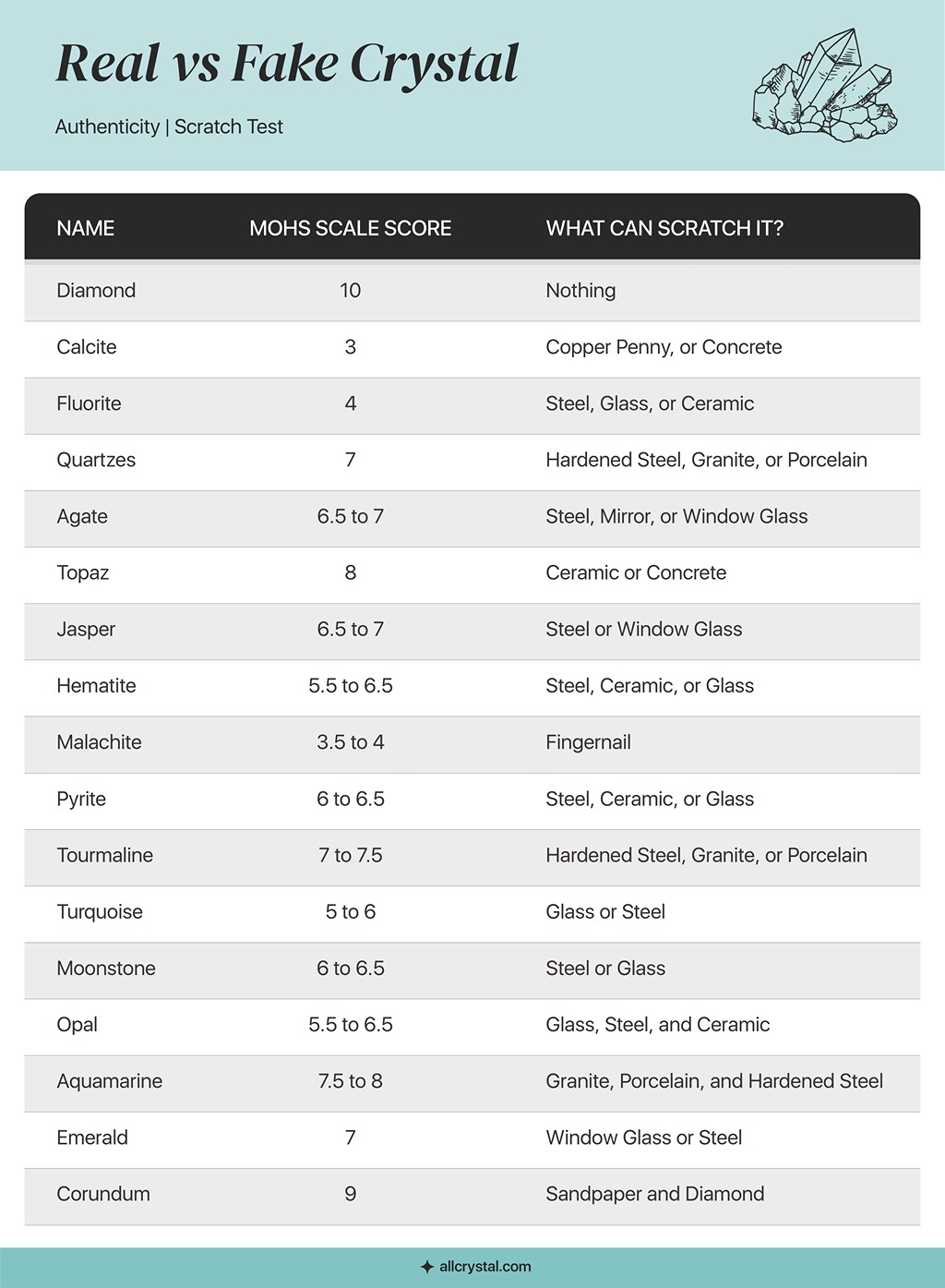
Fluorescence
Real crystals with natural fluorescence glow under UV light in shades like purple, red, violet, blue, orange, green, or other colors. Fake crystals won’t.
Here are 15 crystals that fluoresce under UV light with their color changes so you can identify real crystals from fakes:
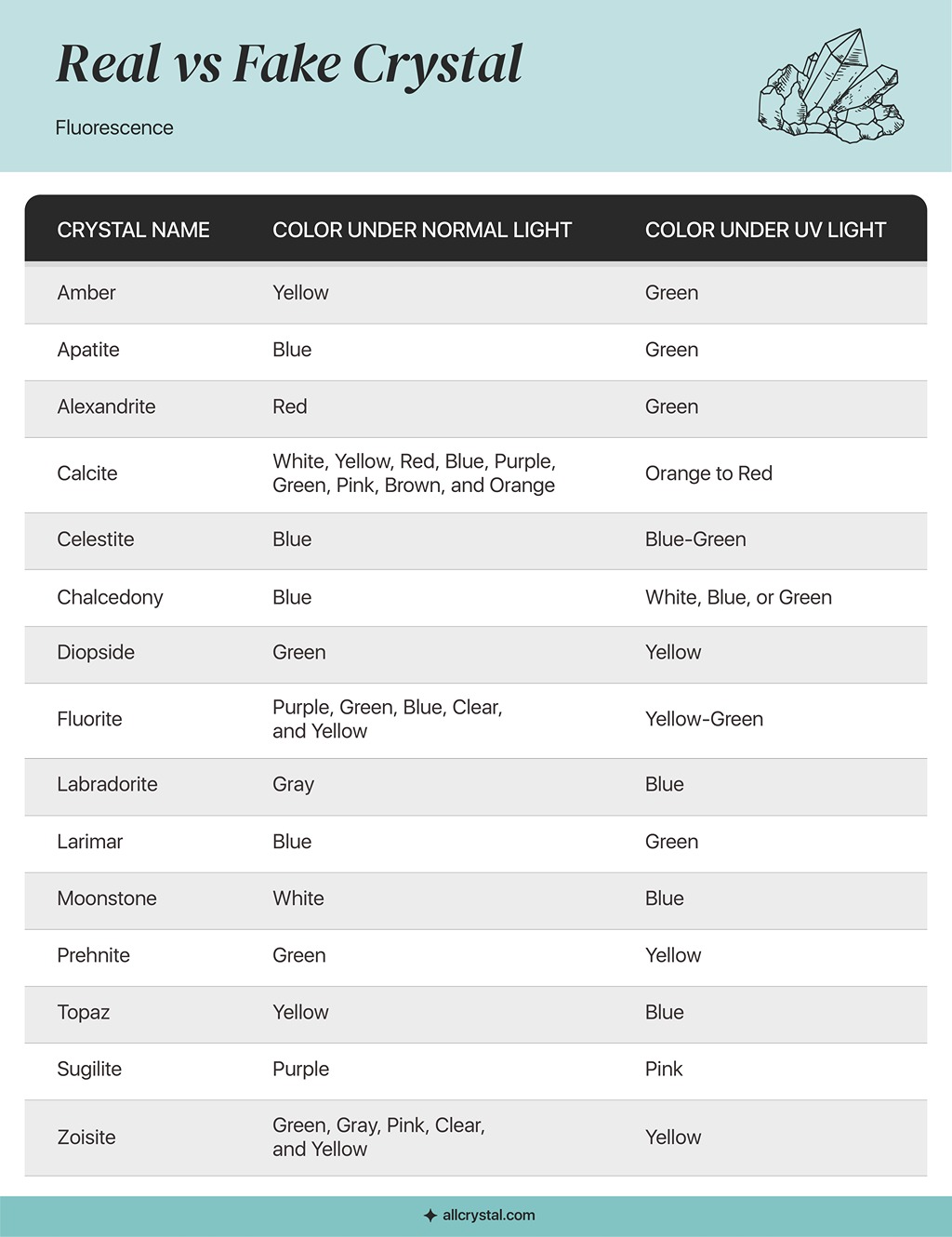
Strange Origins or Names
Some crystals, like Tanzanites, Blue Sapphires, and Rubies, are found in only a few locations, so if the seller is advertising a new name or where it’s not commonly found, look into its origins before purchasing.
Here are some trademarked crystals with other mineral names:
- Azetulite®: This is a Quartz crystal without any defining traits trademarked by Robert Simmons.
- Zultanite or Sultanite®: Trademarked name of the mineral Diaspore, this crystal is called thus by the company that discovered and marketed it – Zultgems LLC.
- Ocean Jasper®: This is a variety of Jasper from Madagascar with unique patterning and swirls and spirals of several colors. It’s trademarked by Enter the Earth, Inc.
- Larimar®: This is a Blue Pectolite variety from the Dominican Republic and is trademarked by Miguel Méndez.
Pro Tip: There are many types of Jaspers, so it’s common to find many with fake origins and names. Watch out!
Compare With Certified Real Ones
One surefire way to find out if you have a natural healing crystal is by comparing it side-by-side with an authentic crystal.
You can use a magnifying loupe and different light settings to do this. Real crystals will show color zoning, inclusions, rugged edges, reflection, refraction, or other optical phenomena under different lights and angles.
Pro Tip: It’s better to read up on the physical traits of healing crystals on our crystal profiles or other content that shows in-depth information about crystals.
Request a GIA Certificate and Report
If a seller is trying to commit fraud, you can request a certificate approved by the Gemological Institution of America. Better yet, pick a GIA Gemologist you know and commission a report with a gem certificate.
9 Crystals That Are Commonly Faked
We learned 15 signs and tests to differentiate real crystals from fakes. I’ll tell you about 9 commonly-faked crystals and how to identify them easily.
Emerald
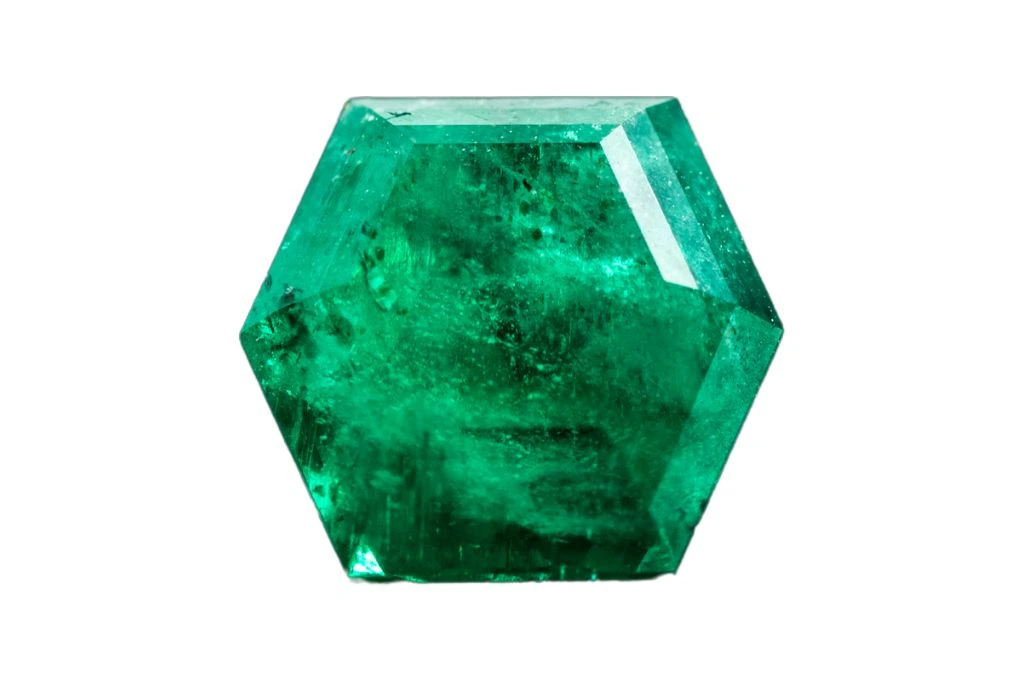
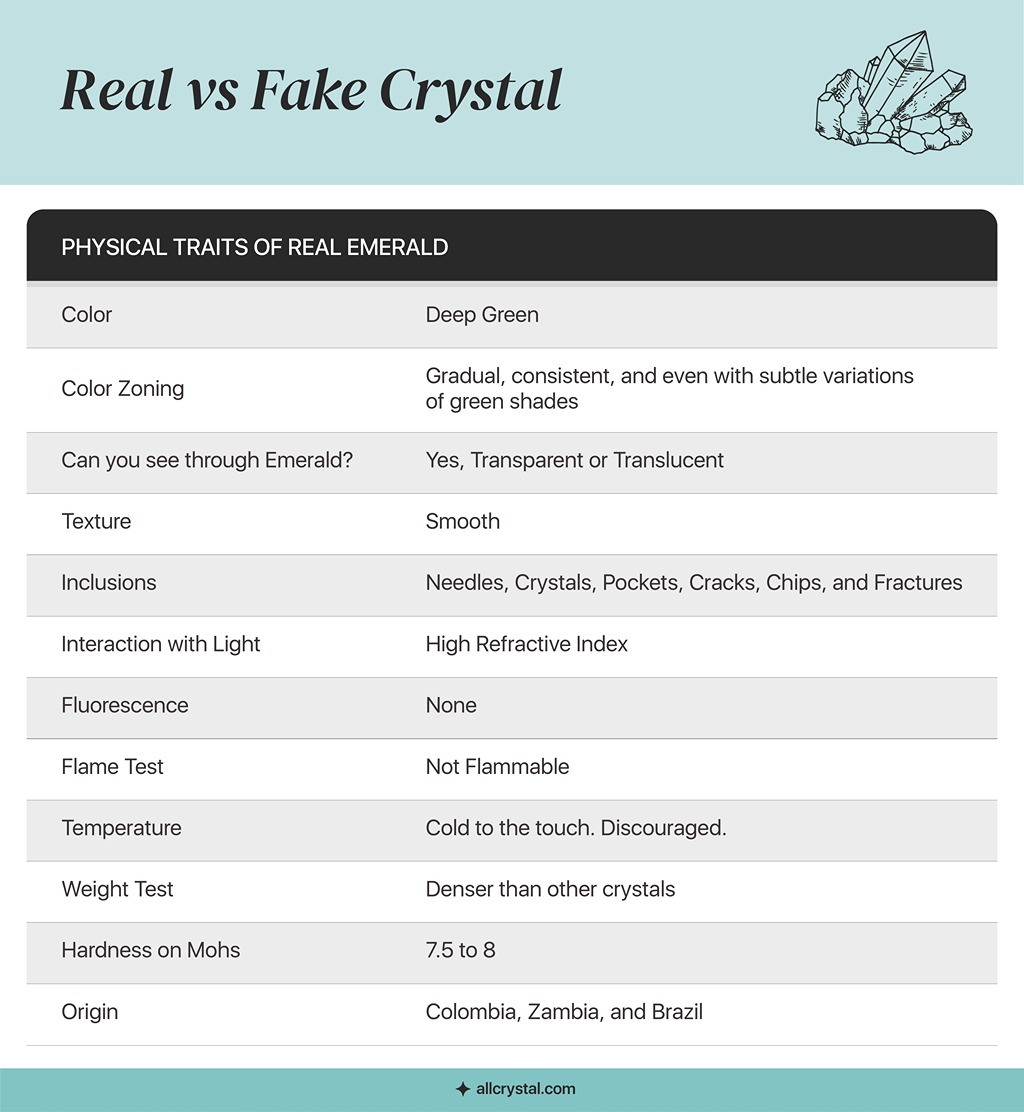
Moldavite
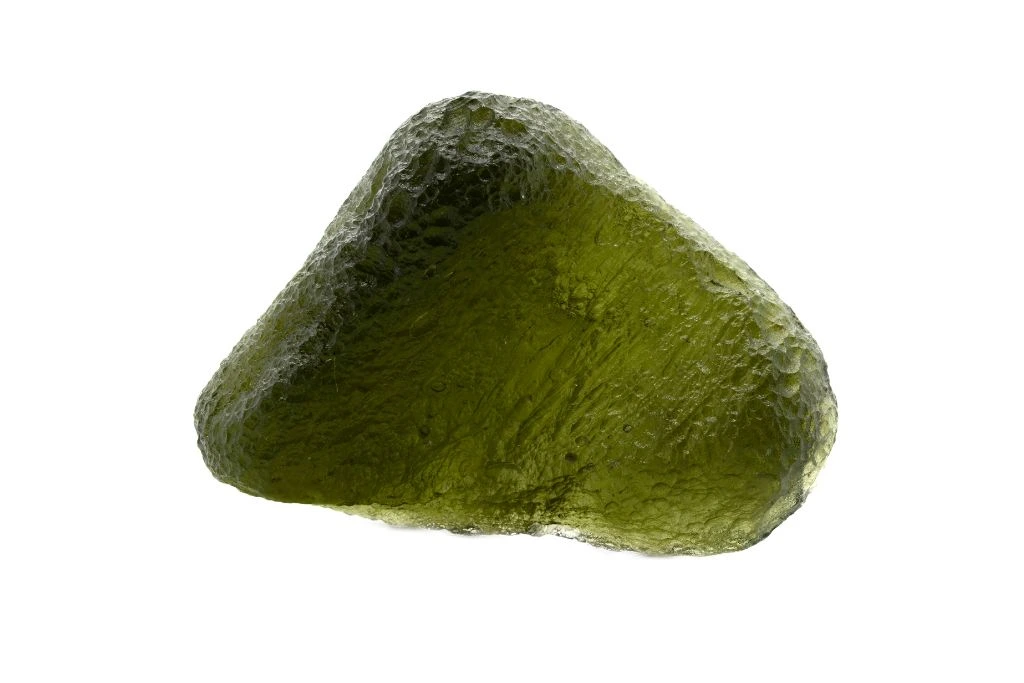
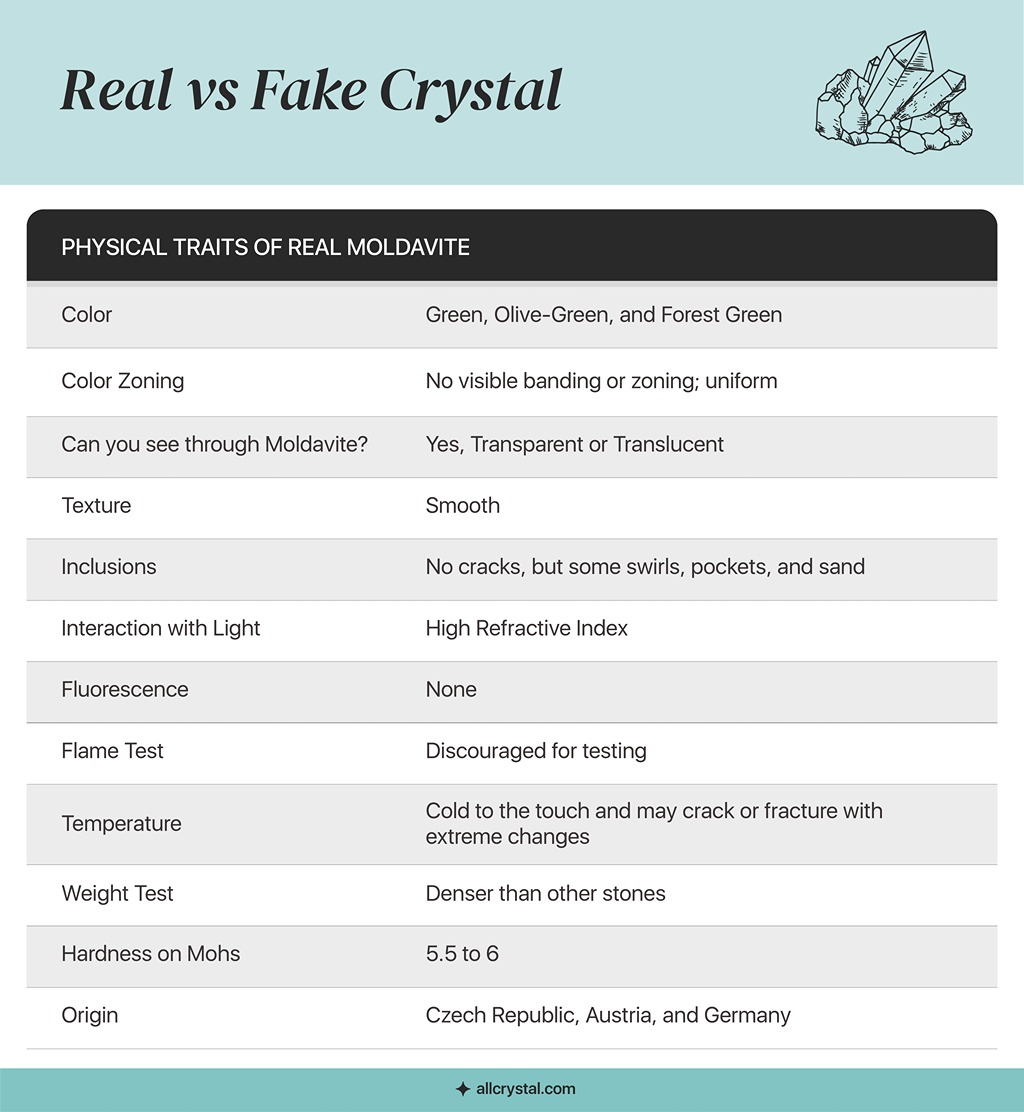
Opal
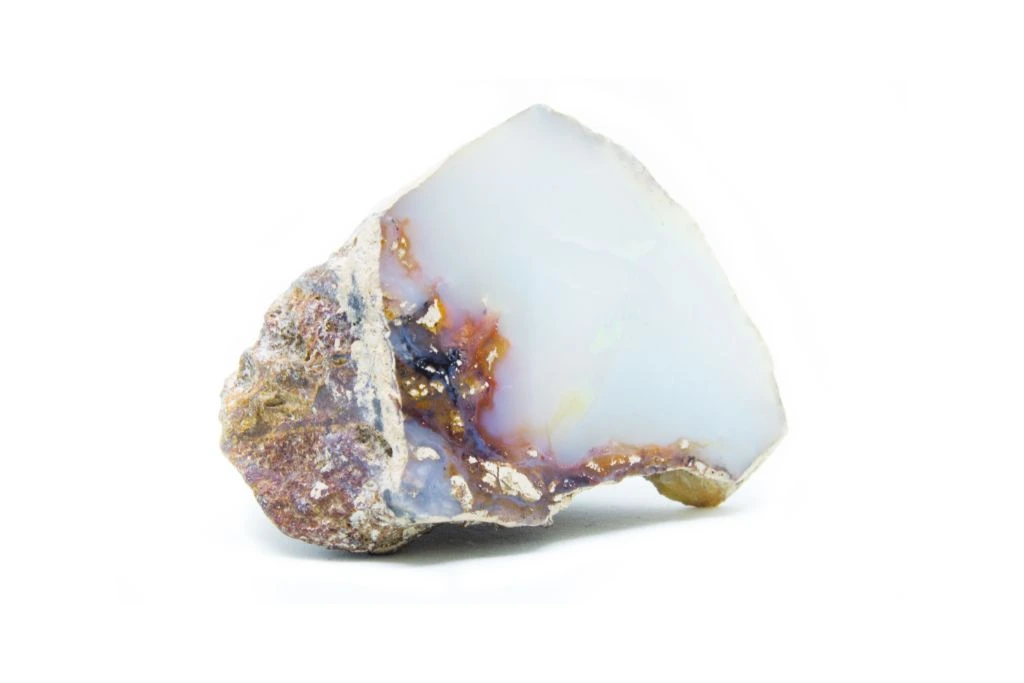
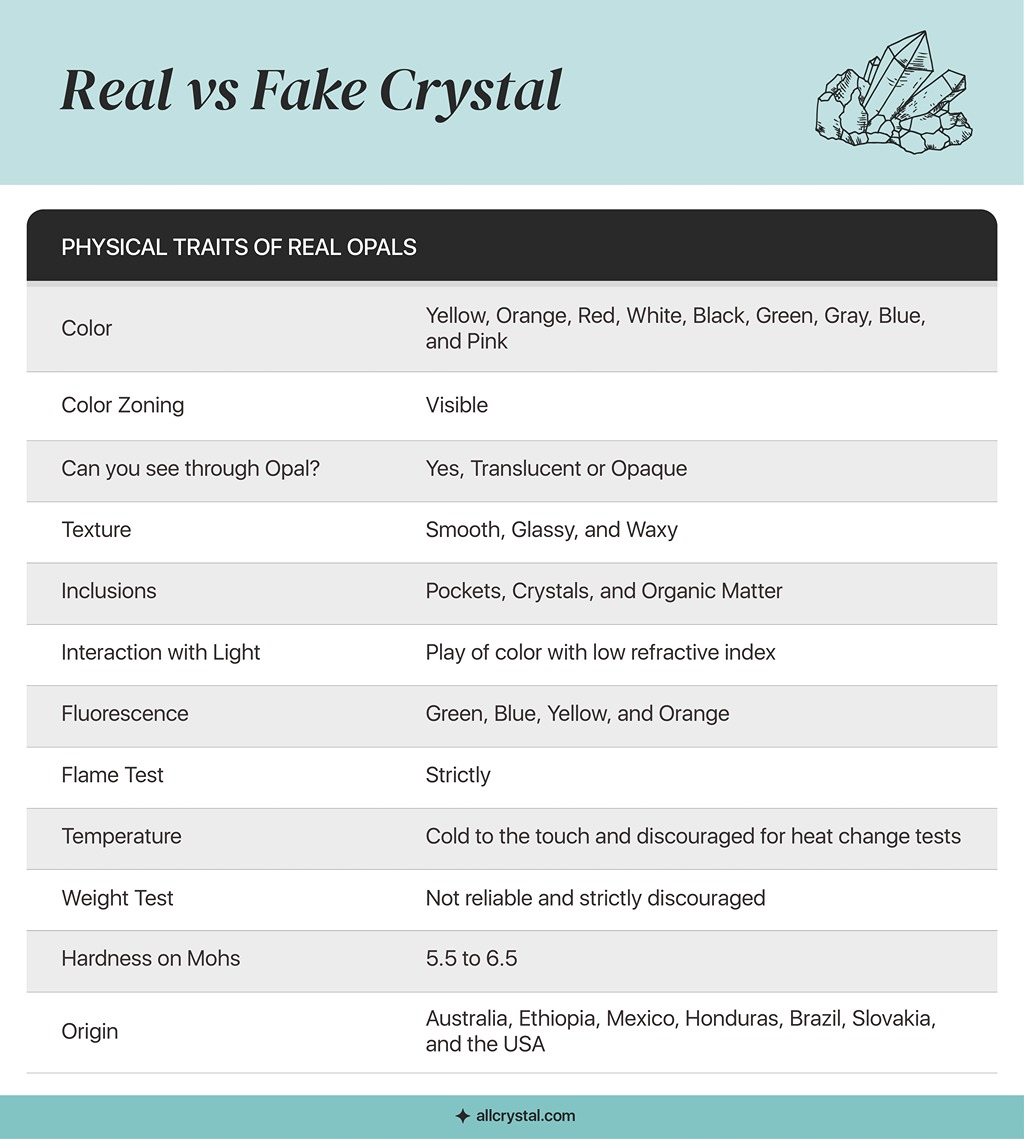
Ruby
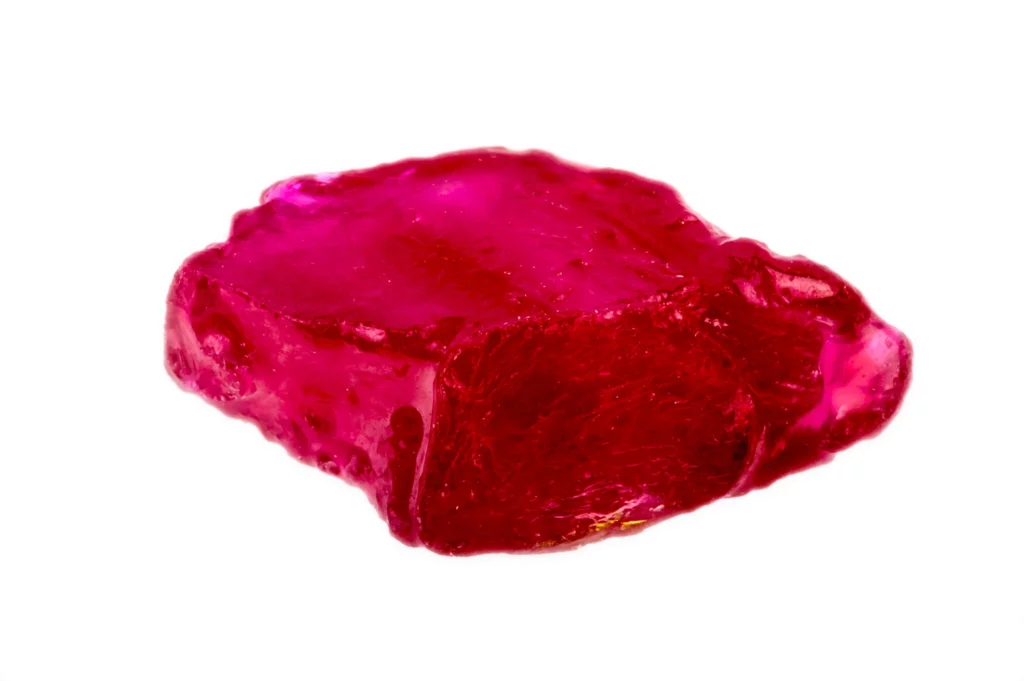
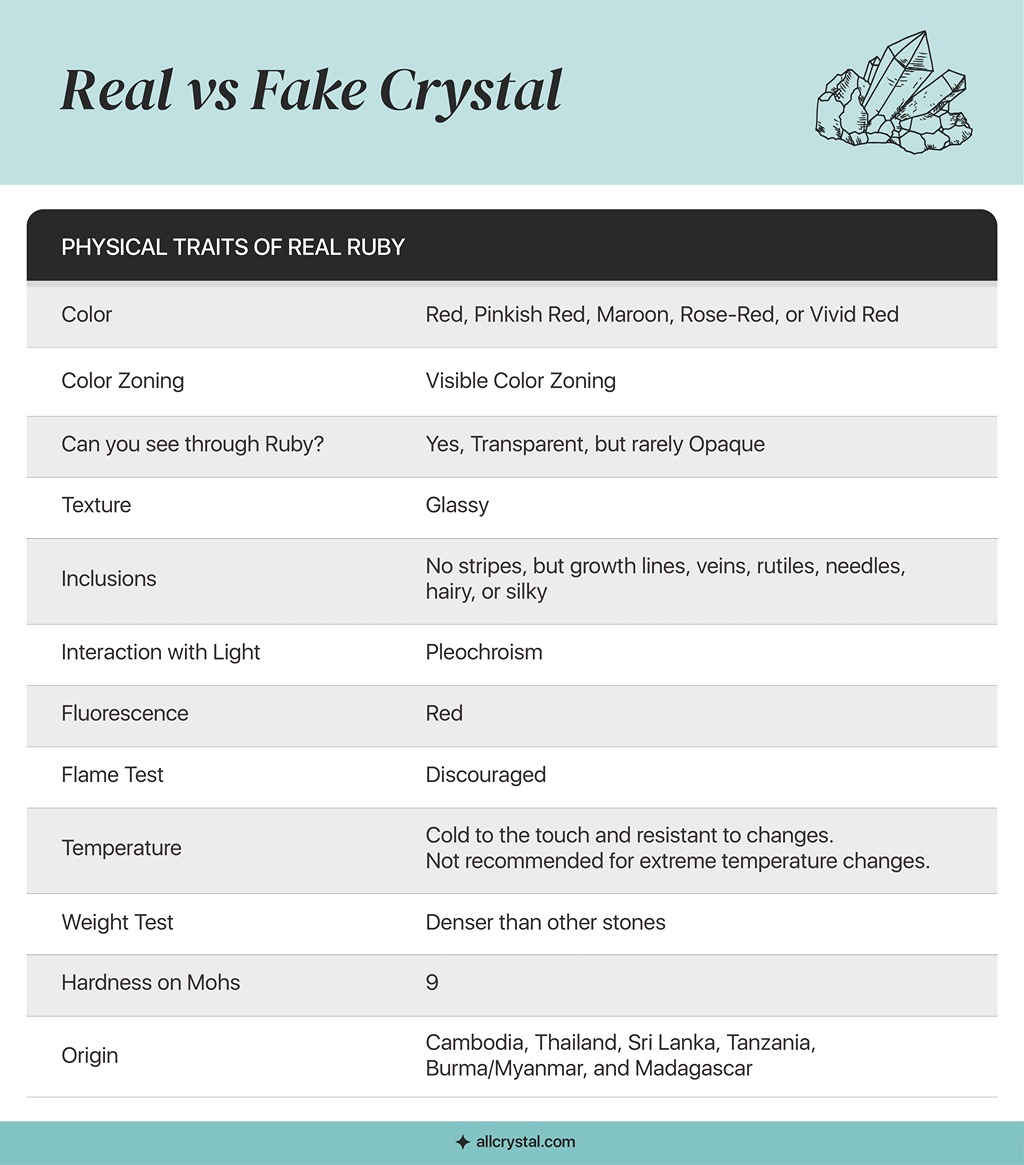
Sapphire
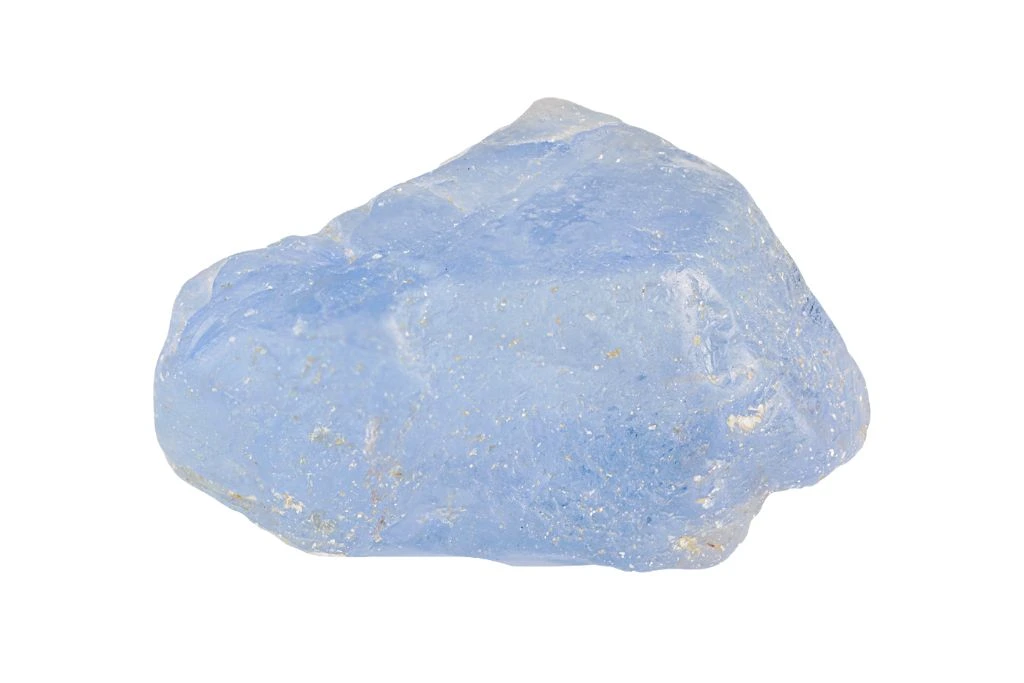
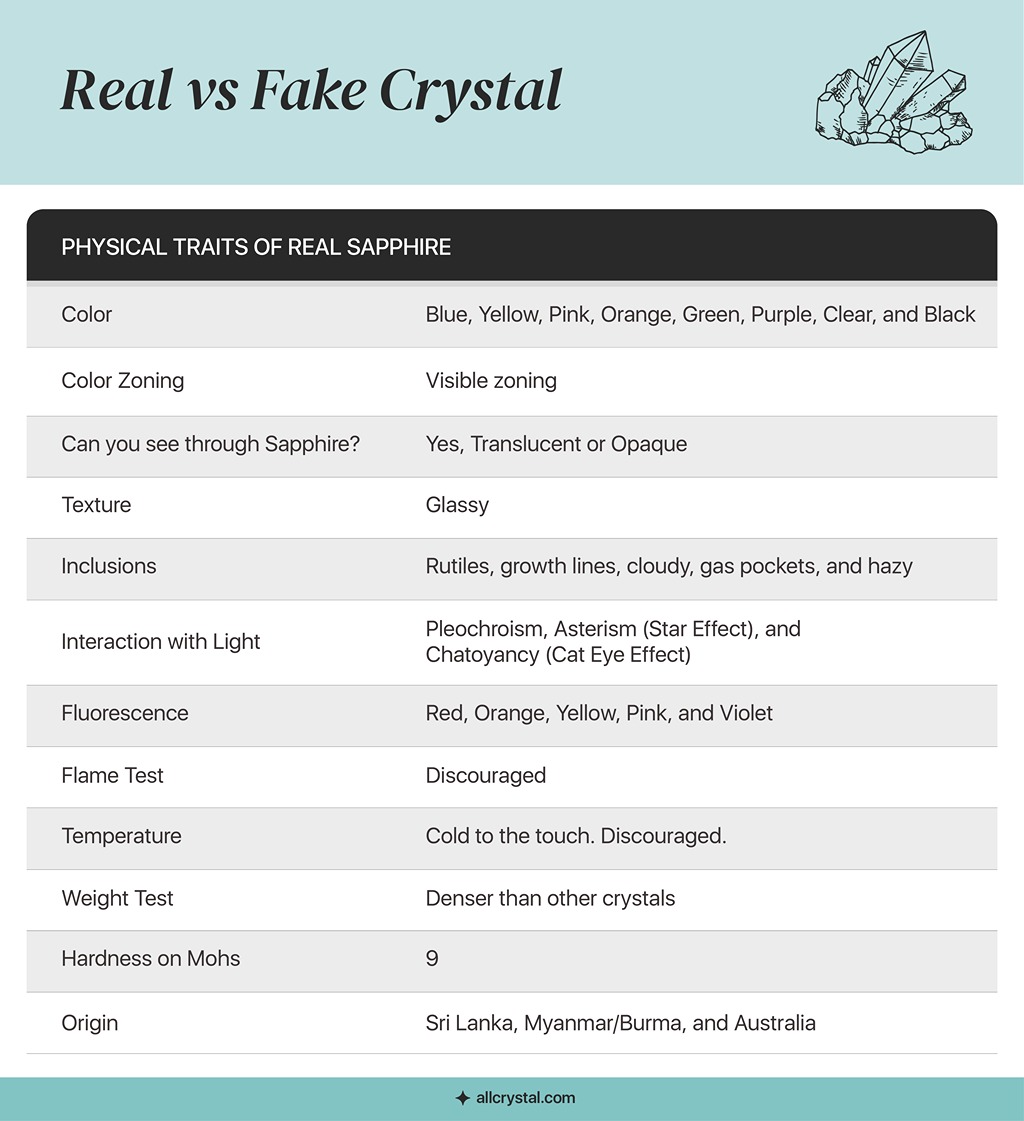
Jade
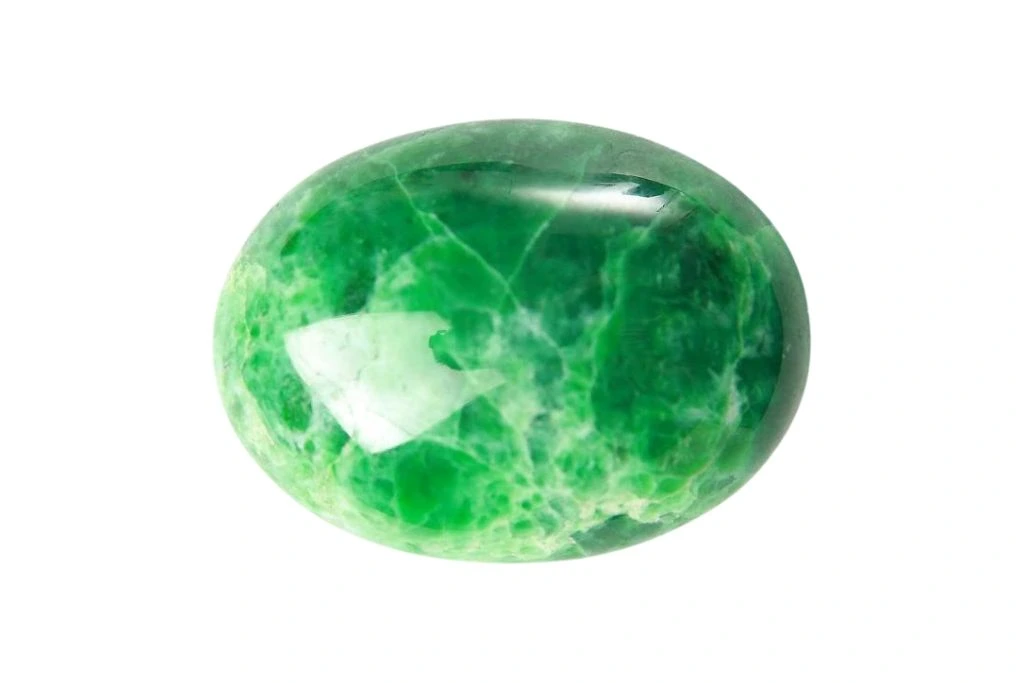
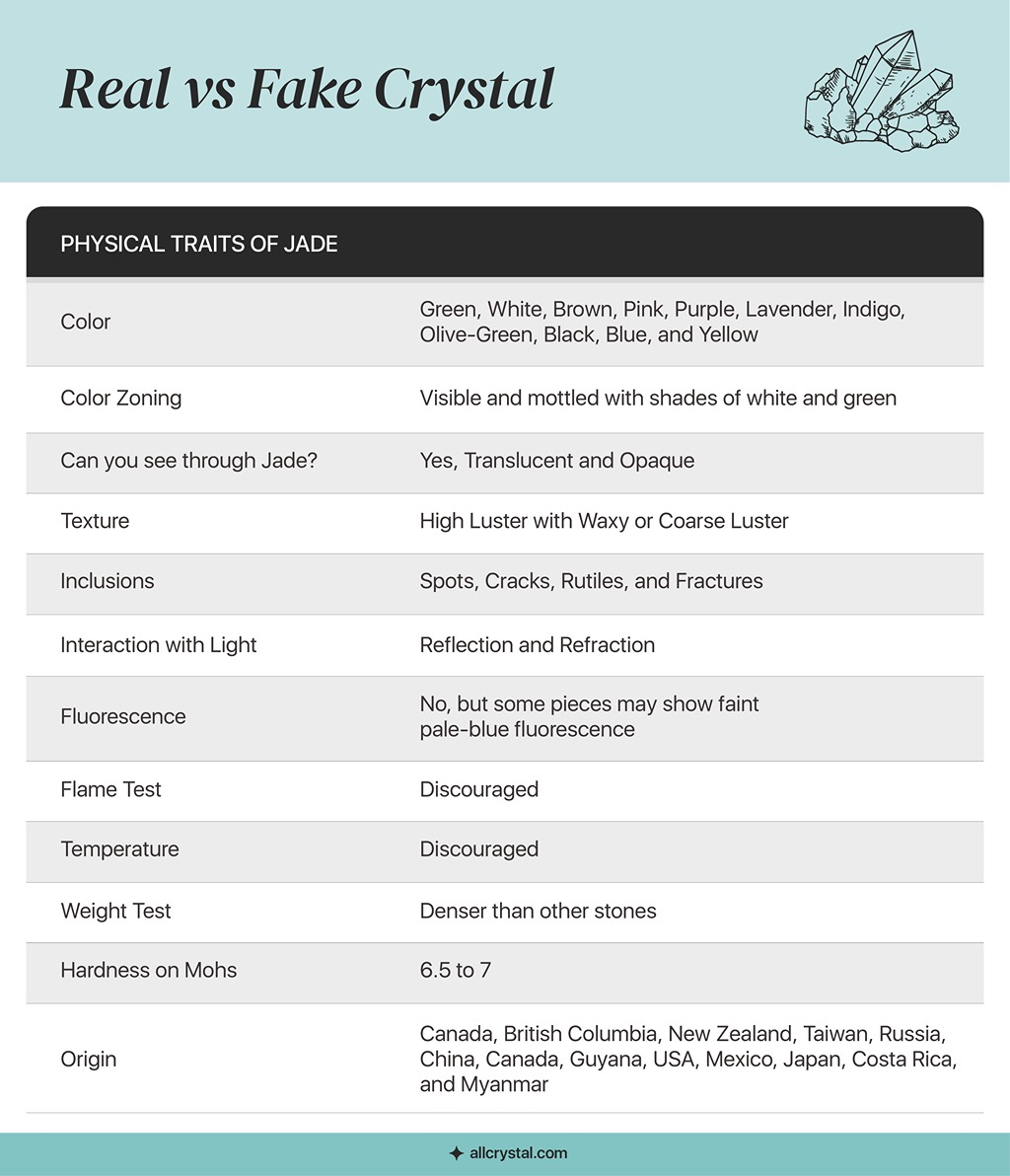
Read more on Real Jade vs. Fake Jade.
Rose Quartz
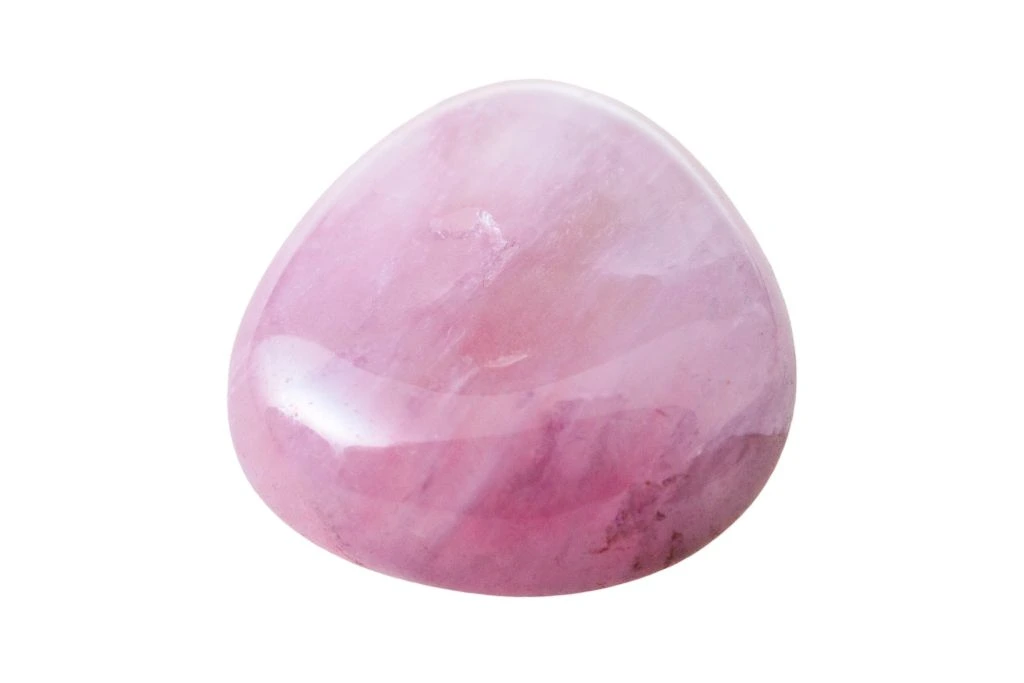
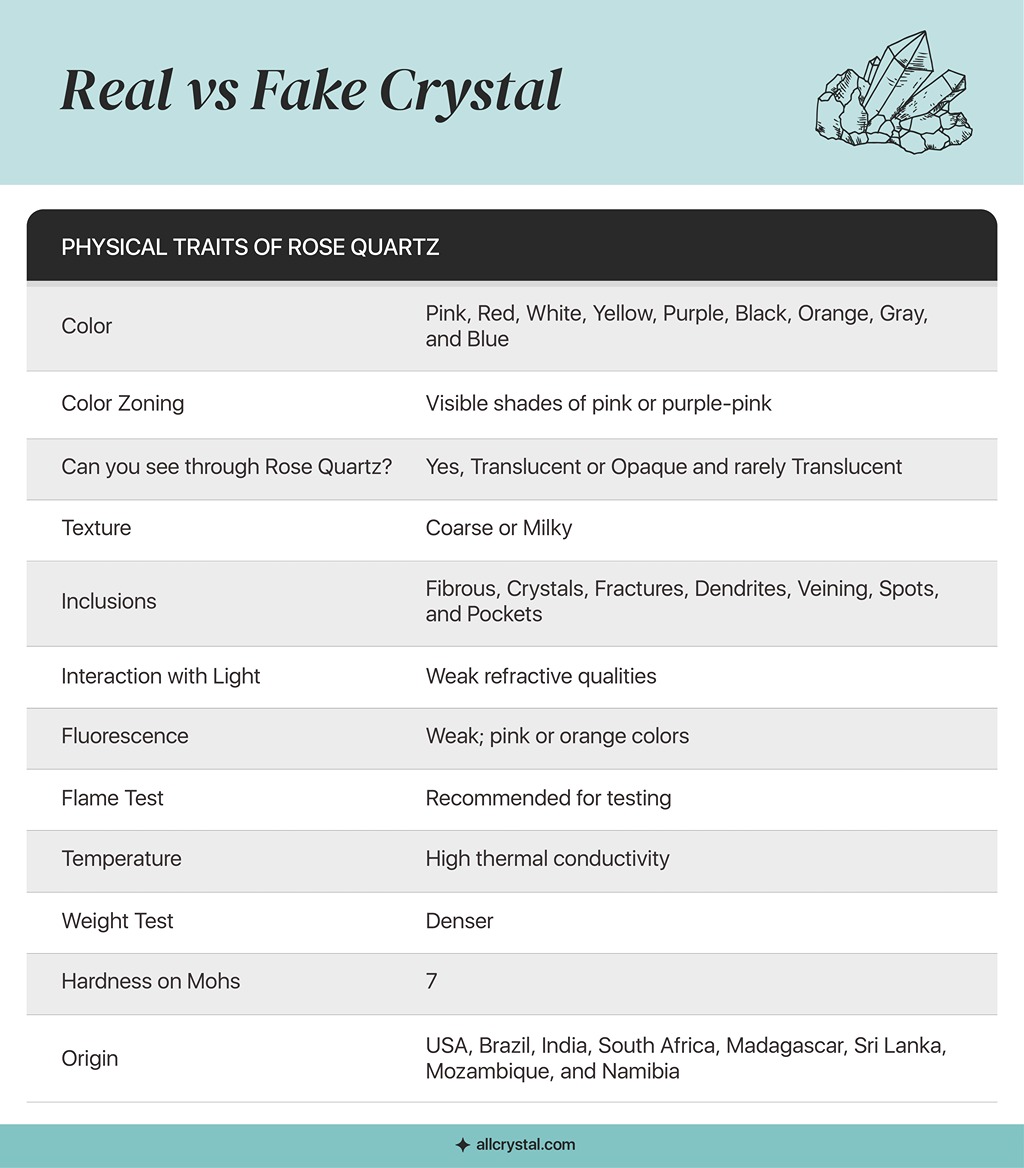
Tanzanite
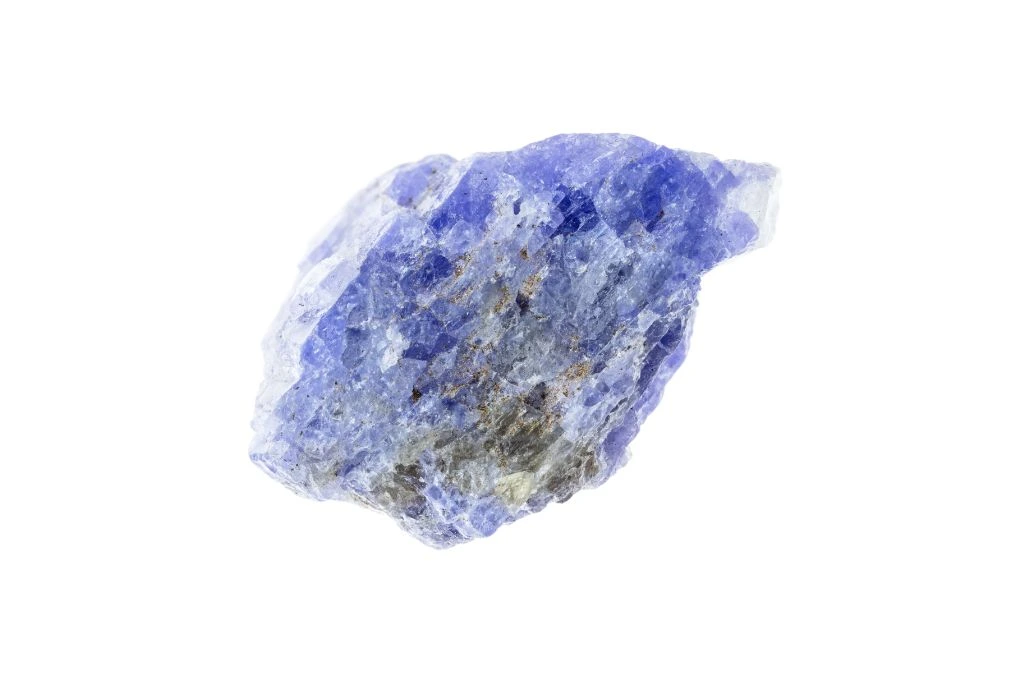
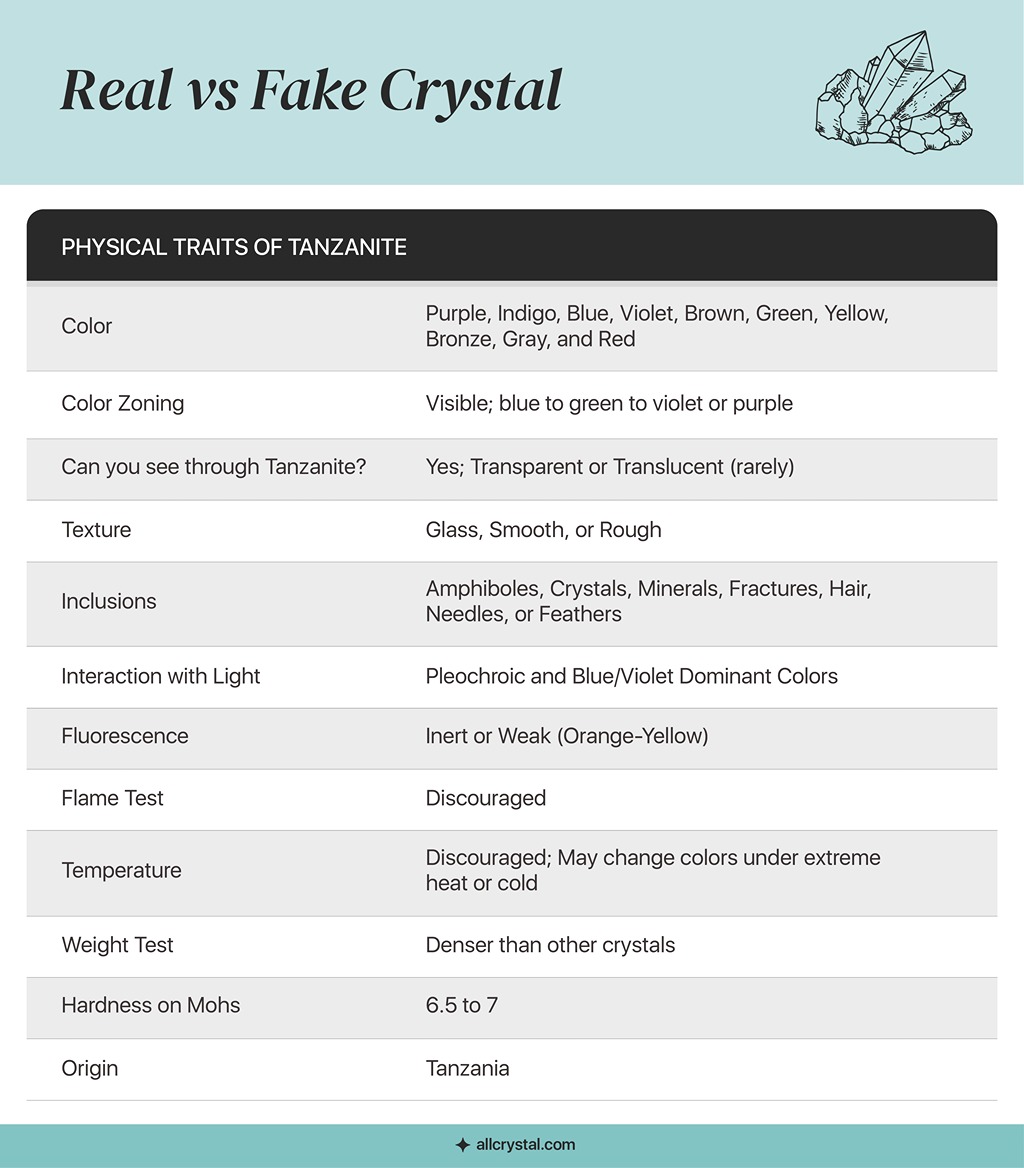
Turquoise
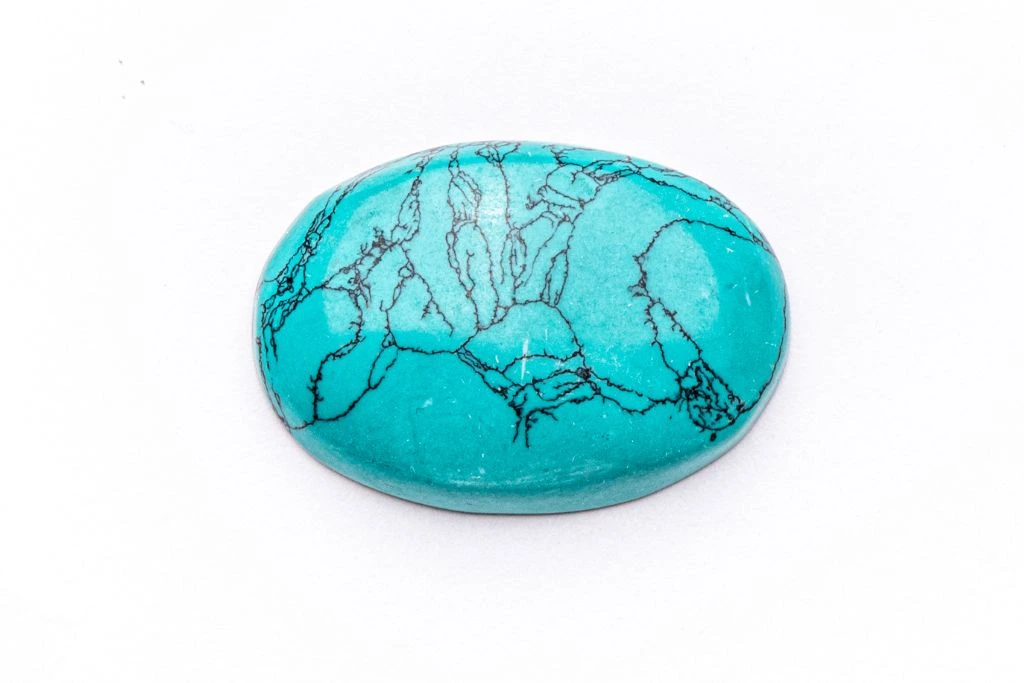
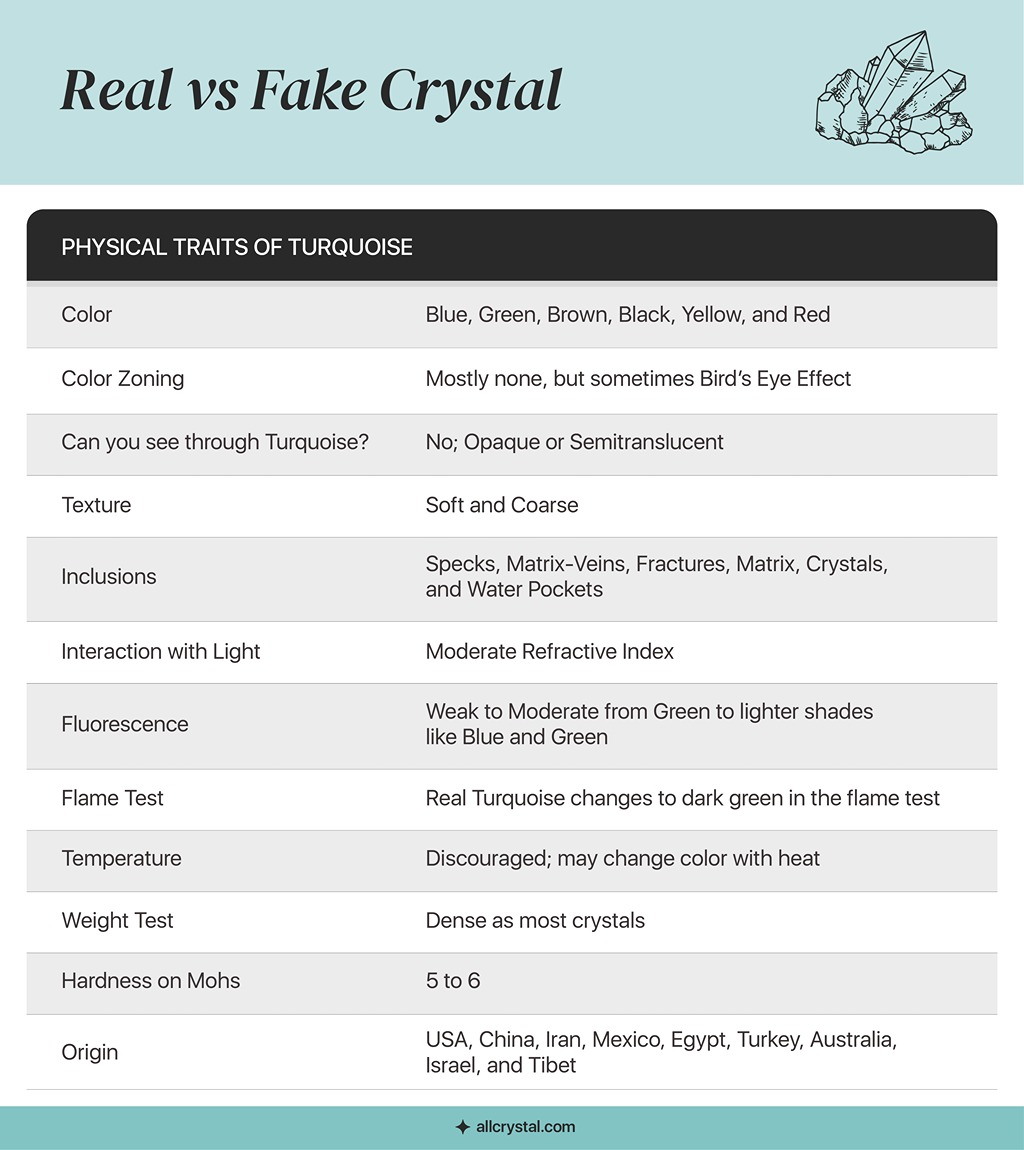
Final Verdict: Real Crystals Vs. Fake Crystals
If you’re trying to distinguish real and fake crystals, remember that all crystals are energy sources, no matter their origin. If you were duped in any way, however, please consult the concerned authorities for just action.
You can use the 15 tests and signs of fake crystals above to distinguish them from real crystals. Ideally, you should subject the crystal in question in conjunction with other tests.
Here’s a quick chart of 15 ways to compare real vs. fake crystals:
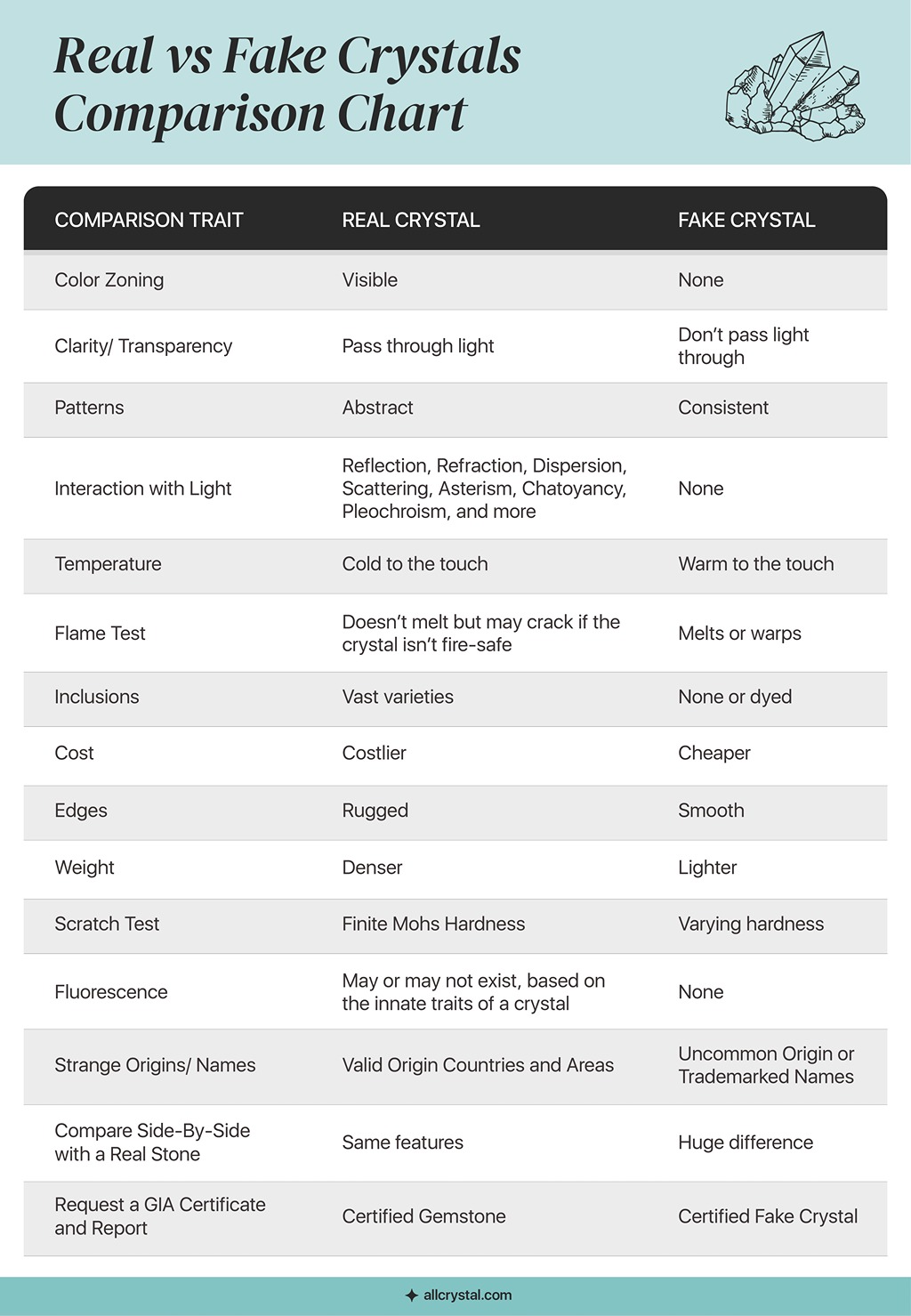
Beware: frauds are always trying to make super-fake crystals hard to distinguish.
With endless fake crystals in the market, it’s better to be safe than sorry. If none of them or some of them are inconclusive, consult a certified gemologist.
Did you know many Quartz crystals are enhanced and sold as Citrine, Amethyst, Rose Quartz, or Smoky Quartz? These crystals are different from their natural counterparts in metaphysical traits.


